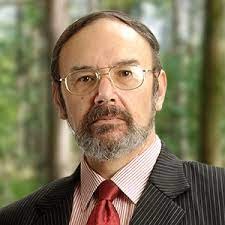Managers have an obligation to get the best value for the money they invest on behalf of their organizations. That is as true for the human side of the business as it is for making investment decisions about machines, technology, or even capital. Systematically and strategically picking the best people, and developing them to make them even more productive, is not something to be put off until a rainy day. It is not something that would be “nice to do” when time permits. It is, instead, essential to gaining and sustaining competitive advantage. While traditional succession planning programs have focused on attracting, developing, retaining and positioning the best High Potential (HiPo) workers, technical succession planning focuses on attracting, developing, retaining, positioning and transferring the knowledge of the best High Professional (HiPro) workers. HiPros are the “go to” people, the in-house experts, on business processes, problems, customers or issues. Traditional succession planning and traditional talent management programs have ignored the critically-important HiPro group. Successful organizations of the future will not be those with the most advanced technology or the most liquid capital. They will, instead, be those that are systematically managing and developing talent—including technical talent such as engineers and research scientists--to gain and sustain competitive advantage. Many HR practitioners are faced with the need to coordinate the start up of a comprehensive succession planning program. However, they often wonder where to start and what to do. This session will provide a detailed approach to guide that start up. While that approach may need to be modified and aligned with each corporate culture, it provides enough details for you to prepare and implement a project plan to implement the technical succession planning program. It goes beyond that traditional focus to add a new, special element—that is, a focus on leveraging the knowledge of HiPros.
WHY SHOULD YOU ATTEND?
Attend this program to discover a new dimension to succession planning that goes beyond preparing people for vertical promotions “up the organization chart” and prepares people for “horizontal promotions” in a dual career ladder system “across the continuum of professional expertise.”
AREA COVERED
I. Introduction
- Overview
- Objectives
II. Implementing a Technical Talent Planning and Management System
- A model to guide technical talent management systems
- New thinking on technical talent models
- The critical importance of competency models in technical talent management
- Recruiting and selecting the best technical talent
- Identifying key hipros
- Appraising and developing the best technical talent
- Positioning the best technical talent
- Retaining the best technical talent
- Transferring the knowledge of technical talent: Approaches
- Activity
III. Conclusion
- Summary
- Final Q & A
LEARNING OBJECTIVES
- Review how technical talent management differs from, and is similar to, traditional—that is, management-focused—talent management
- Prepare a project plan to implement a technical talent management system
- Identify and develop technical competencies
- Examine the essential components of a performance management system as part of a technical talent management effort
- Determine how to identify HiPros
- Describe how to leverage the knowledge of HiPros and how to transfer that knowledge
- Review effective recruiting and retention strategies for HiPros
WHO WILL BENEFIT?
- Technical managers (such as engineering, IT, accounting, R & D)
- HR managers who serve technical/professional departments or organizations
Attend this program to discover a new dimension to succession planning that goes beyond preparing people for vertical promotions “up the organization chart” and prepares people for “horizontal promotions” in a dual career ladder system “across the continuum of professional expertise.”
I. Introduction
- Overview
- Objectives
II. Implementing a Technical Talent Planning and Management System
- A model to guide technical talent management systems
- New thinking on technical talent models
- The critical importance of competency models in technical talent management
- Recruiting and selecting the best technical talent
- Identifying key hipros
- Appraising and developing the best technical talent
- Positioning the best technical talent
- Retaining the best technical talent
- Transferring the knowledge of technical talent: Approaches
- Activity
III. Conclusion
- Summary
- Final Q & A
- Review how technical talent management differs from, and is similar to, traditional—that is, management-focused—talent management
- Prepare a project plan to implement a technical talent management system
- Identify and develop technical competencies
- Examine the essential components of a performance management system as part of a technical talent management effort
- Determine how to identify HiPros
- Describe how to leverage the knowledge of HiPros and how to transfer that knowledge
- Review effective recruiting and retention strategies for HiPros
- Technical managers (such as engineering, IT, accounting, R & D)
- HR managers who serve technical/professional departments or organizations

